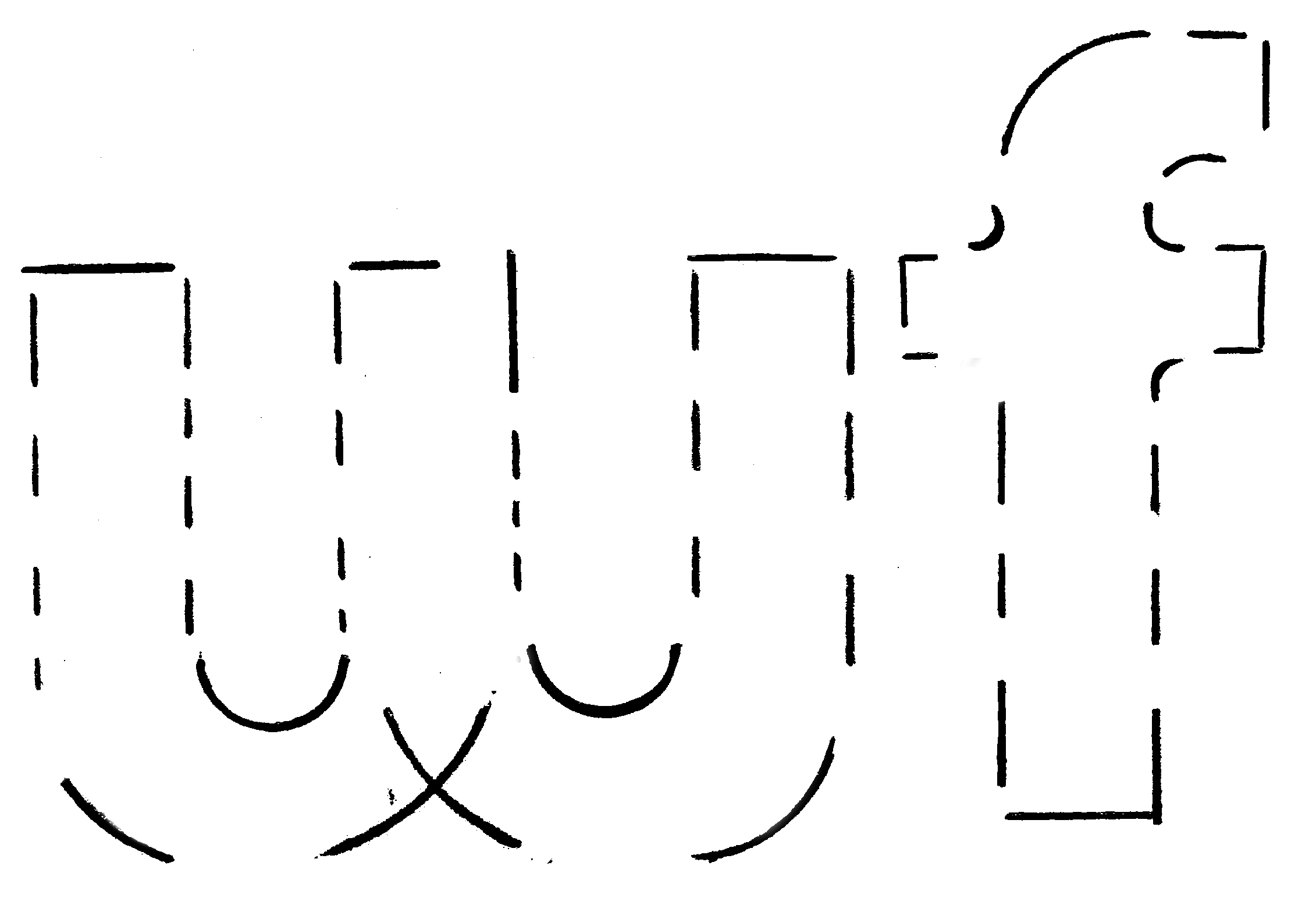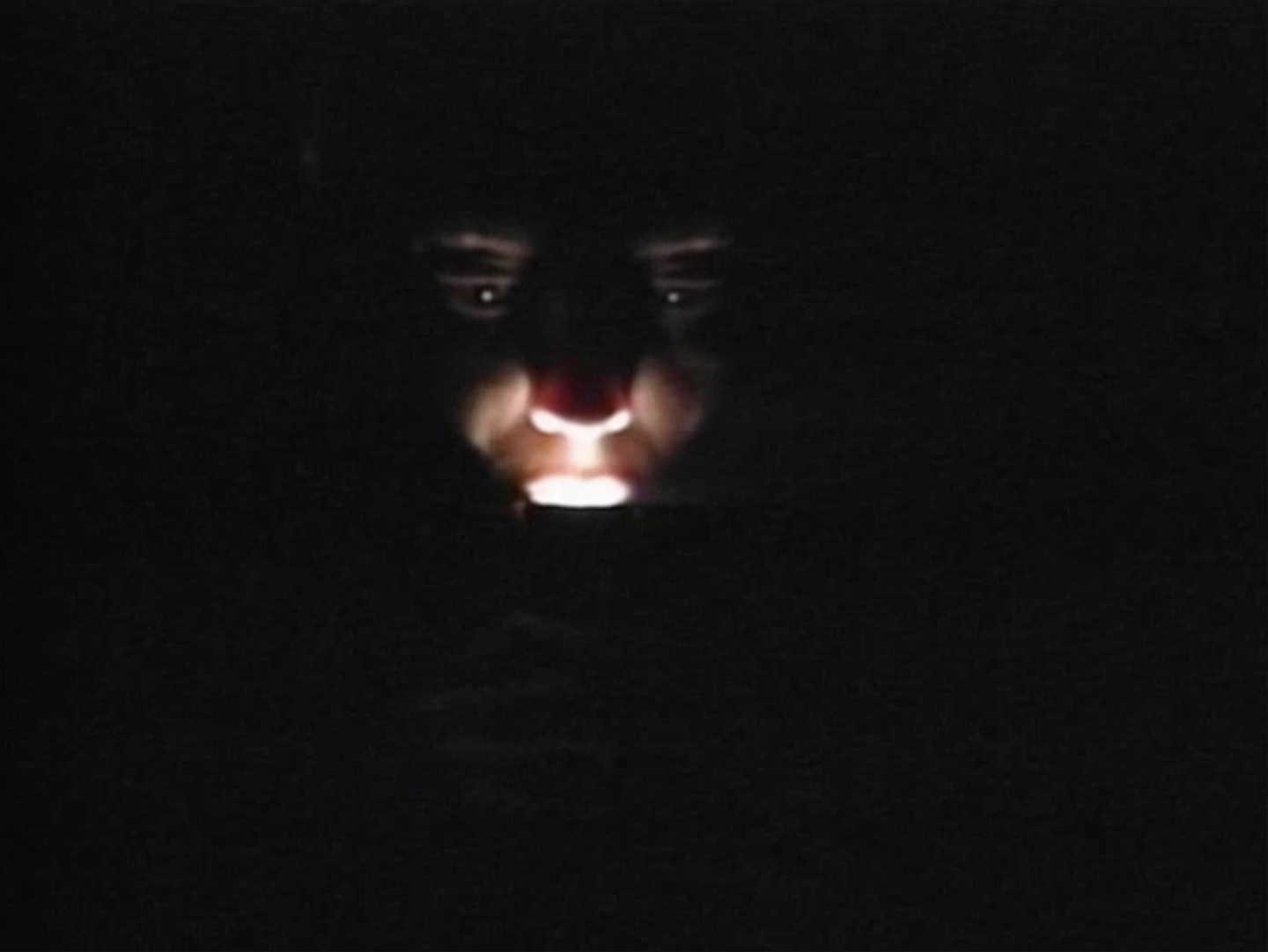
Apparition Room
Western Front is pleased to present Apparition Room, an immersive group exhibition curated by Lee Plested that brings together digitized artworks from Western Front’s archives to celebrate its 50th year. Set within a scenography of lighting, props, and furnishings by artist Nile Koetting, the exhibition space evokes the cool aesthetics of the waiting room to welcome visitors to slow down, stay a while, and engage in contemplation. Performance documentation, and video and sound artworks, play across an arrangement of screens, projections, and speakers showing fifty years of art by over fifty artists experienced on these premises as four hour and a half long programs, which unfold across the exhibition’s duration as detailed below.
To ground the experience in the body and tangible material world, tours for up to four people are available by registration each Thursday and Saturday at 1:30 and 3:30 p.m. On these occasions, a host guides visitors through the current program, augmenting their experience with a choreography of gesture, script, and tea service featuring brews devised by artists Bryan Mulvihill and T’uy’t’tanat-Cease Wyss, and ceramic ware by local potters. Please note, that on tour days, that main gallery space will only be accessible to drop in visitors between 2:30 - 3:30 p.m.
Register for a tour here.
Through pairing advancements in media technology, with contemporary approaches to the age-old traditions of tea, ceramics, and hosting, Apparition Room creates an environment to reflect upon Western Front’s longstanding commitment to artistic experimentation across media and the ethos of art as life.
All exhibited works are available to view in their full form and length within Western Front’s library during gallery hours.
Artists include Kathy Acker, Abbas Akhavan, Eleanor Antin, Joan La Barbara, Martin Bartlett, Re-becca Belmore, bill bissett, Maggie Boyd, Hank Bull, Nao Bustamante, Maria Magdalena Campos-Pons, Dana Claxton, Kate Craig, Shawna Dempsey and Lorri Millan, Jane Ellison, Robert Filliou, Coco Fusco, General Idea, Bianca Greco, Rana Hamadeh, Mona Hatoum, Michael Henry, Gordon Hutchens, I Kadek Anggara Dwianta, I Kadek Diva Nanditya, Tari Ito, Charmian Johnson, Nile Koetting, Alison Knowles, Danny Kostyshin, Neil Leonard, Glenn Lewis, Ethan Lum, James Luna, Rita McKeough, Eric Metcalfe, Kate Metten, Michael Morris, Bryan Mulvihill, Antoni Muntadas, Gailan Ngan, Wayne Ngan, Judy Radul, Emily Sheppard, Corin Sworn, Vincent Trasov, Zainub Verjee, Laura Wee Lay Laq, Hildegard Westerkamp, Paul Wong, Cornelia Wyngaarden, T’uy’t’tanat Cease Wyss
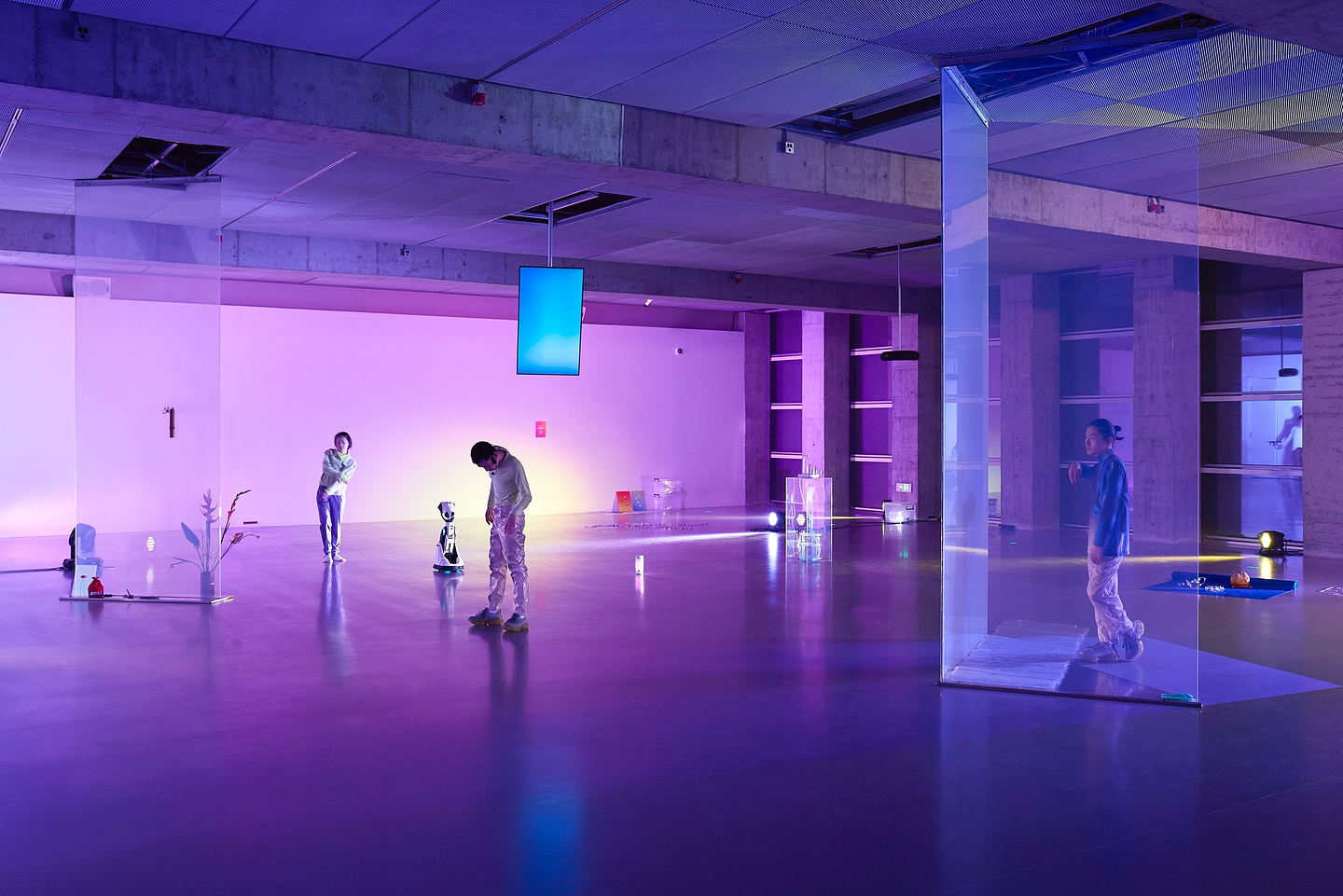
Programs
Jan 14 – Feb 4, 2023
Under the Skin
Reflections on identity and the fragility of being are developed through the lens of performativity, indigeneity, and colonialism and its consequences.
Artists: Eleanor Antin, Martin Bartlett, bill bissett, Dana Claxton, Kate Craig, Mona Hatoum, Charmian Johnson, Glenn Lewis, James Luna, Kate Metten, Laura Wee Lay Laq, Paul Wong
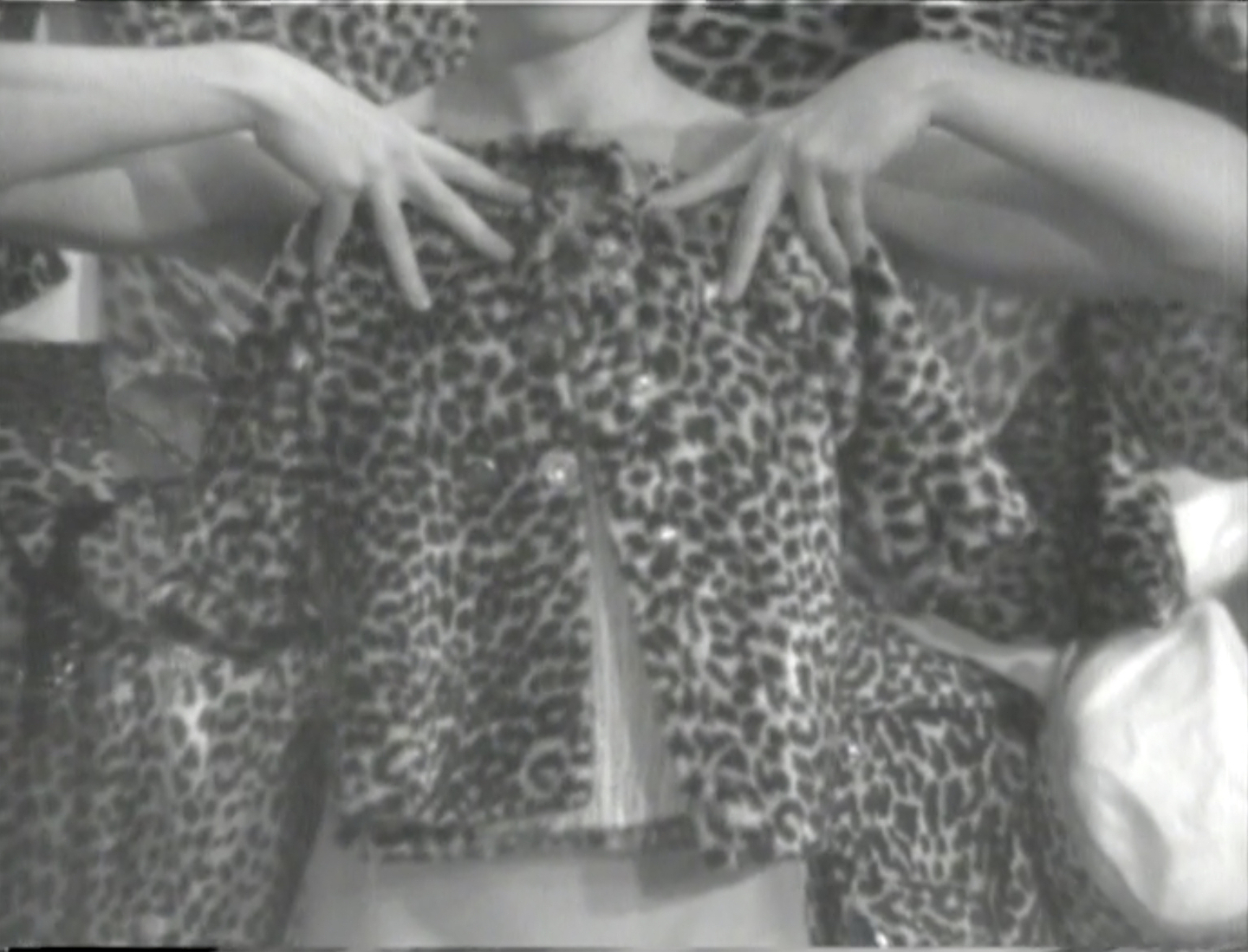
Feb 7 – Feb 25, 2023
Bodies Beyond Boundaries
Based in performative actions, these works explore trials of human endeavor and persistence, sharing an interest in the innate potential of being.
Artists: Abbas Akhavan, I Kadek Anggara Dwianta, Maria Magdalena Campos-Pons and Neil Leonard, I Kadek Diva Nanditya, Coco Fusco and Nao Bustamante, Bianca Greco, Danny Kostyshin with bill bissett, Glenn Lewis, Ethan Lum, Rita McKeough, Gailan Ngan, Judy Radul, Emily Sheppard, Laura Wee Lay Laq, Cornelia Wyngaarden
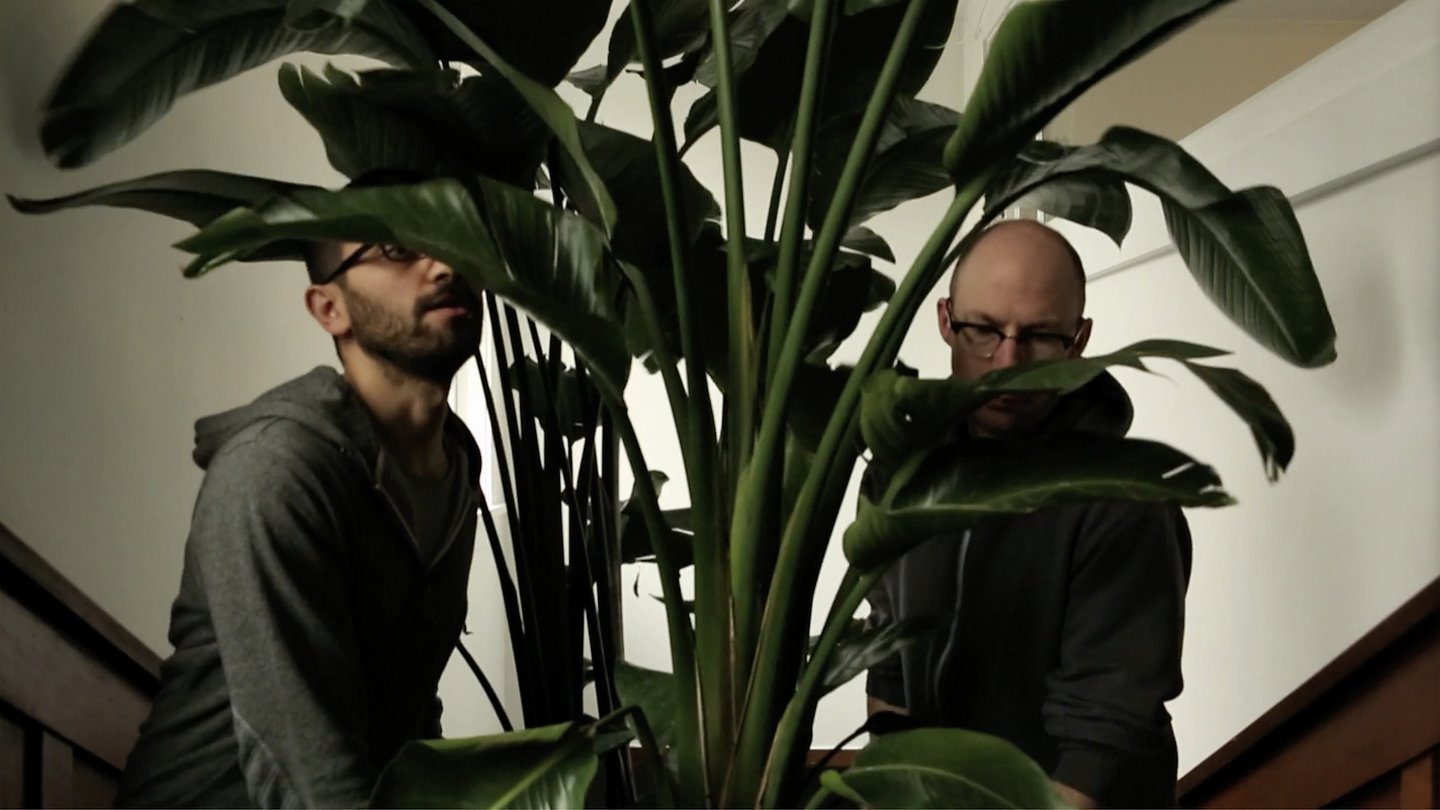
Feb 28 – Mar 18, 2023
Abstract Means of Production
Making as a means and the meaning of making, oscillate in these diverse takes on labour which irreverently poke at the systems and conditions of capital.
Artists: Joan La Barbara, Robert Filliou, Rana Hamadeh, Mick Henry, Gordon Hutchens, Tari Ito, Alison Knowles, Kate Metten, Michael Morris and Glenn Lewis, Antoni Muntadas, Gailan Ngan, Zainub Verjee
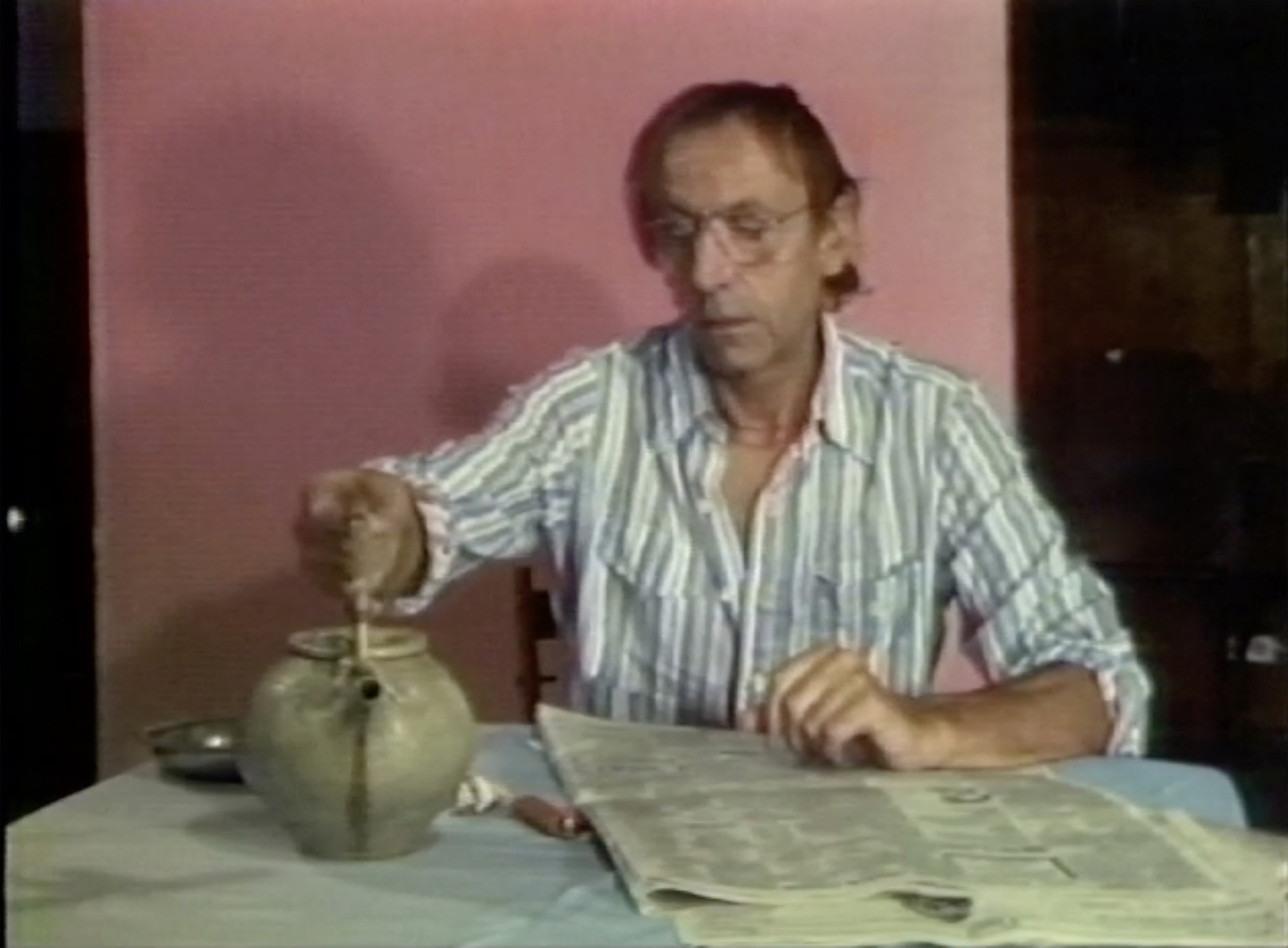
Mar 21 - Apr 1, 2023
Narrating Susceptibility
Through the act of storytelling, these artists spin allegories of alienation and its antecedents to reveal objectifying apparatuses of power and their related inequities.
Artists: Kathy Acker, Rebecca Belmore, Maggie Boyd, Hank Bull, Shauna Dempsey and Lori Millan, Jane Ellison, Lori Freedman, General Idea, Image Bank, Eric Metcalfe, Gailan Ngan, Wayne Ngan, Vincent Trasov, Emily Sheppard, Hildegard Westerkamp
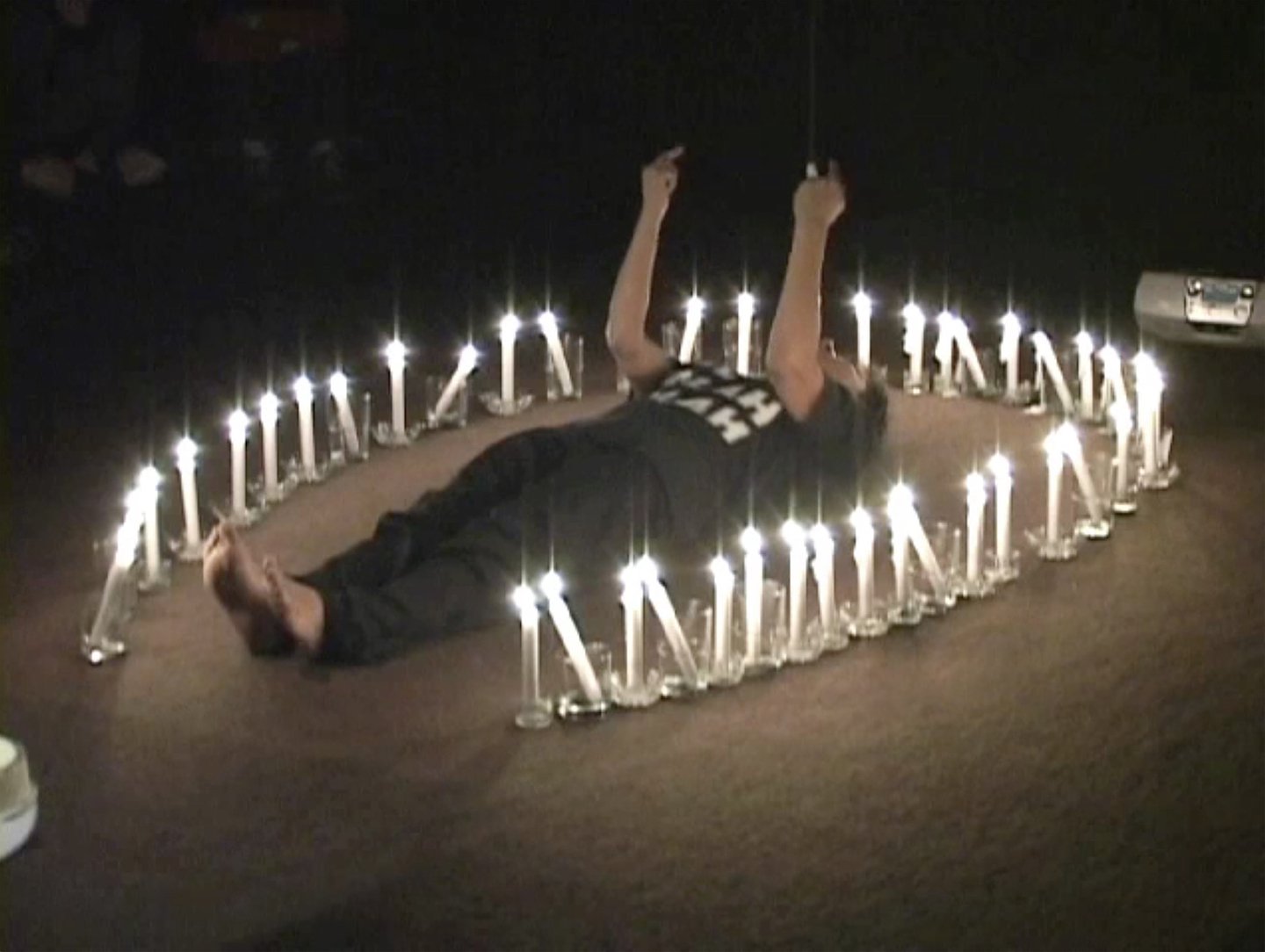
Ongoing
Corin Sworn’s Rag Papers (2013) and Jane Ellison and Eric Metcalfe’s Oh Yes Oh No, (1979) play intermittently in the reception across the duration of the exhibition.
All exhibited works are available to view in their full form and length within Western Front’s library space during exhibition opening hours.
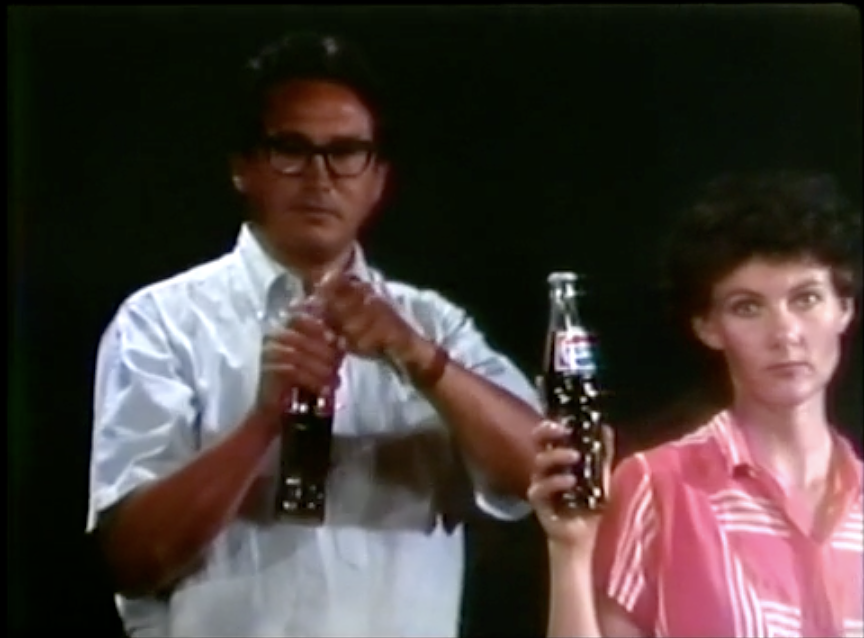
About the Artists
Kathy Acker (1947-1997) was a writer and artist born in New York City. Her postmodern novels and transgressive writing style explored subject matter that reflected the punk-sensibilities of the 1970s and often dealt with themes such as childhood trauma, sexuality and rebellion.
Abbas Akhavan (b. 1977) is a Montréal based artist whose practice is rooted in site-specificity, employing drawing, sculpture, video, installation and performance to investigate the network of architectural, economic, natural and social elements that shape a given space. Akhavan’s work reveals the conceptual contradictions that can be expressed through objects and space, such as familiarity and strangeness, hostility and hospitality.
I Kadek Anggara Dwianta participated in the Mepalu Sari project as one of Insitu Recordings’ Balinese highschool student-mentees.
Eleanor Antin (b. 1935) is an American artist and filmmaker whose practice blurs the lines between art, performance and theatre to explore history, contemporary culture and identity from a feminist perspective. More recently, Antin has been producing large-scale photographic tableaux that reflect on themes such as environmental destruction and modern warfare. Much of Antin’s work engages serious subject matter while being marked with wit and humour.
Joan La Barbara (b. 1947) is an American composer, performer and sound artist. Recognized worldwide for the pioneering experimental and extended vocal techniques, including multiphonics, circular singing, ululation and glottal clicks she developed and championed and for her unique compositional style, La Barbara creates works for multiple voices, chamber ensemble, music theatre, orchestra, film and interactive technology. Her work immerses audiences within the sonic space. Awards include Guggenheim Fellowship, Deutscher Akademischer Austauschdienst Berliner Künstlerprogramm and the Foundation for Contemporary Arts John Cage Award.
Martin Bartlett (1939-1993) was a musician, composer, performer, writer and educator who lived in Vancouver. He was the co-founder of Western Front, the Electronic Music Studio at SFU and the founder of the Vancouver Community Gamelan. A pioneer of electroacoustic music, Bartlett’s compositions frequently featured aleatoric elements and his performances were often collaborative in nature.
Rebecca Belmore (Anishinaabe, b. 1960) is an artist currently based in Vancouver whose work engages in sculpture, video and photography in a performance-based practice that often makes use of repetitive gestures and natural materials. Rooted in the political and social realities of Indigenous communities, Belmore’s works make evocative connections between bodies, land and language.
bill bissett (b. 1939) is a Canadian poet, musician and artist living in Toronto. He is known for his unconventional orthography and utilizes phonetic spelling as a strategy to contest normative subject positions. bissett’s poetry readings often incorporate elements of sound poetry and involve sound effects, chanting and dancing. His work incorporates humour and political commentary.
Maggie Boyd is a Canadian ceramicist, sculptor, drawer and educator living in Brooklyn. With an interest in the moments when art and life intersect, Maggie seeks to have her work be both precious and quotidian. Her bowls, mugs, teapots and sculptures are often brightly coloured and marked with shapes, patterns and figures.
Hank Bull (b. 1949) is a Vancouver based artist, curator and administrator. His practice exists at the intersection of painting, music, performance, writing and video. Recognized as an innovator in radio and telecommunications, Bull was a regular contributor to the informal collective of artists who were experimenting with slow scan video, text transmission and fax in the 1980s and 90s. He played an active role in the development of artist-run culture in Canada.
Nao Bustamante (b. 1969) is a Mexican-American artist residing in Los Angeles whose practice encompasses performance art, video installation, filmmaking, sculpture and writing. Bustamante’s performances are both playful and often, uncomfortable, addressing issues relating to the body, ethnicity, class, gender and pop culture.
Maria Magdalena Campos-Pons (b. 1959) is a Cuban artist currently based in Nashville whose practice spans photography, painting, sculpture, film, video and performance and addresses issues of history, memory, gender and religions. Directly informed by their identity formation and the traditions, rituals and practices of her ancestors, Campos-Pons’ work is deeply autobiographical.
Dana Claxton (b. 1959) is an artist and educator of the Wood Mountain Lakota First Nation who currently resides in Vancouver. Claxton’s practice strives to blend traditional experiences and environments within contemporary spaces, using film, video, photography, installation and performance to investigate indigenous beauty, the body, the socio-political and the spiritual.
Kate Craig (1947-2002) was a Vancouver based artist involved in performance, mail art and video production. Her practice paid particular attention to the surface of objects, be it organic or artificial, and explored the social character of identity and the cultural infatuation with images of the female body. Craig was one of the founders of Western Front where she initiated the artist-in-residence program, spearheaded the media art program and was often camera operator for many early performances and video works.
Shawna Dempsey (b. 1963) and Lorri Millan (b. 1965) are a performance art duo based in Winnipeg. Their practice addresses lesbian and feminist themes in a variety of media, including film, video, live performance, publications and public art projects. Dempsey and Millan make frequent use of comedy and costumes to create narratives that parody is culturally sanctioned as normal and legitimate.
I Kadek Diva Nanditya participated in the Mepalu Sari project as one of Insitu Recordings’ Balinese highschool student-mentees.
Jane Ellison (b. 1949) is a dancer, teacher and artist whose practice is based in embodied movement research and somatic practices. Since 1975 Ellison has participated in, organized and led classes, workshops and performances. Her cross-disciplinary work reflects and has been influenced by its origins and situation in the social and cultural milieu of Western Front. A twenty year position on faculty at Langara College’s Studio 58 theatre school provided another platform for her investigation into the relationships between movement, art, performance and lived experience.
Robert Filliou (1926-1987) was a French economist and artist associated with Fluxus, who produced works as a filmmaker, action poet, sculptor and director of artistic happenings. His practice emphasized the autonomy of the individual and was rooted in the life/art intersections that exist in Fluxus philosophy. Filliou was influential in the development of the Mail Art practice and is well known for his proclamation of Art’s Birthday, which continues to be celebrated to this day.
Coco Fusco (b. 1960) is a Cuban-American artist and writer living in New York City whose practice explores the politics of gender, race, war and identity through multimedia productions and interactive performances. Fusco’s work is informed by multicultural and postcolonial discourses as well as by feminist and psychoanalytic theory as it investigates the ways that intercultural dynamics affect the construction of the self and ideas about cultural otherness.
General Idea was formed in Toronto by Jorge Zontal (1944-1994), Felix Partz (1945-1994) and AA Bronson (b. 1946). They produced work in numerous mediums, foreshadowing relational aesthetics and institutional critique while addressing various aspects of mass media, consumer culture, social inequalities, queer identity, the art economy and the AIDS crisis. As an aspect of their artistic output, General Idea founded FILE Magazine, and Art Metropole, a non-profit artist-run centre with a focus on contemporary art in formats predisposed to circulation and dissemination.
Bianca Greco participated in the Mepalu Sari project as a student of Burnaby North Secondary School.
Rana Hamadeh (b. 1983) is an artist from Lebanon living in the Netherlands, whose practice spans performance, sound, networked media, film, and text. Drawing on curatorial methods within her artistic practice, Hamadeh develops longstanding discursive projects that explore the infrastructures, epistemologies and technologies of justice. The Destiny Project, launched in 2020, is her newest long-term endeavour, invested primarily in questions surrounding algorithmic justice and ‘machinic emancipation’.
Mona Hatoum (b. 1952) is a British-Palestinian artist living in London. With an early career focus on video and performance art, Hatoum’s practice has shifted to creating large-scale installations and sculptural works that engage the viewer in conflicting emotions of desire and revulsion, fear and fascination. Her work frequently addresses political issues, concerns on gender and the body and the dangers and confines of the domestic world.
Michael Henry (b. 1939) was a graduate of Vancouver School of Art (1961) and went on to apprentice at the Leach Pottery from April 1963 to July 1965. Henry produced his pottery in Vancouver from 1965 to 1970 before moving to Roberts Creek, BC, where he built Slug Pottery and his salt-glaze kiln. It was in use from 1972 to 1979. His contributions to BC pottery were largely influenced by Bernard Leach. He is currently living in Sechelt, BC.
Gordon Hutchens is a potter based on Denman Island, British Columbia. His work ranges from sculptural to functional and is well known for the depth and diversity of his glazes and the strength and refinement of his forms. Hutchens frequently makes use of local materials, from clay found on his own property, to seaweed used for salt firings and wood ash used as an ingredient in his glazes.
Tari Ito (1951-2021) was a Japanese performance artist and activist based in Tokyo. With a background in pantomime and theatre, Ito turned to performance art as a medium to explore sexuality, military sexual violence, nuclear disasters and personal identity. The founder of the Women’s Art Network in Tokyo, Ito’s performances frequently reflected on female and LGBTQ+ sexuality and identity.
Charmian Johnson (1939-2020) was an artist and potter based in Vancouver. A graduate of UBC, she taught elementary, high school and university (at UBC). Primarily a ceramicist, Johnson began pottery in the late sixties, studying under Glenn Lewis. By 1970 she had her own studio at her home in East Vancouver where she produced work until 2014. Her ceramics were greatly influenced by Bernard Leach, having catalogued his diverse collection of pots, as well as Korean and Chinese ceramics, especially the glazing used in the Ming, Ying and Sung dynasties. She also worked in pen and ink, producing a large series of floral drawings. Both her pots and her drawings have been collected by individuals and institutions locally and across Canada, including The National Gallery in Ottawa.
Alison Knowles (b. 1933) is a New York based artist who was a founding member of the Fluxus movement. Known for her performances, soundworks, installations and publications, Knowles’ practice is distinguished by the indeterminacy of her event scores as well as the elements of visual, aural and tactile participation that exists within her performances.
Danny Kostyshin (b. 1952) is a potter based in Vancouver. He makes porcelain and stoneware tea bowls, cups, plates and bowls and encourages the use and enjoyment of the handmade, functional ceramic object in daily domestic rituals. Often integrated into this practice is confrontational text and images which deal with themes of sexuality, the environment and HIV/AIDS through these ceramics bodies.
Neil Leonard (b. 1959) is an American sound artist, saxophonist and composer. He performs his compositions with a mix of contemporary musicians and folkloric ensembles. Recent sound installations explore how global marketing impacts our listening, and were made in collaboration with bartenders, biologists, street criers and dock workers.
Glenn Lewis (b. 1935) is an artist and educator living in Vancouver. With an artistic background rooted in traditional pottery and sculpture, Lewis also employed photography, film, video and performance to question the dialect between conventional objects and art, social obligation and natural instinct, function and wonder. He was a co-founder of Western Front and a former member of Intermedia.
Ethan Lum participated in the Mepalu Sari project as a student of Burnaby North Secondary School.
James Luna (1950-2018) was an Indigenous and Mexican-American artist and educator who lived in the La Jolla Reserve in California. Through performance, photography and installation, Luna utilized objects, references to American popular culture and his own body in his work. His practice made frequent use of institutional critique, comedy and theatre and confronted themes of colonialism, violence, sexuality and identity.
Rita McKeough (b. 1951) is an artist based in the Treaty 7 area of southern Alberta on the traditional territories of the Blackfoot Confederacy (Siksika, Kainai, Piikani), the Tsuut’ina, the Îyâxe Nakoda Nations, and the Métis Nation (Region 3). Her performances and installations are often immersive, collaborative efforts that reconfigure contradictions and tensions in everyday life. McKeough consistently works from a feminist perspective with a focus on issues such as displacement, domestic abuse, and ecological damage caused by resource extraction. She feels fortunate to have the support of her community to produce her work and offers respect and gratitude to everyone who has helped her.
Eric Metcalfe (b. 1940) is a Vancouver based artist whose early artistic practice explored drawing, printmaking and Fluxus conceptual art. Metcalfe developed an alter ego, named “Dr. Brute”, and engaged in collaborative performances, installations, correspondence art. He was a co-founder of Western Front and was responsible for much of its early performance art programming.
Kate Metten (b. 1991) is an interdisciplinary artist and production potter influenced by the history of West Coast ceramics. The internal logic of her vessels is determined by intuitive construction and response to traditional material process; local clays are glazed with scavenged Hornby oyster shells pulverized into a calcium matte glaze, and reduction fired shino lustres. Metten’s objects arise out of multi-layers of decision making to develop timeless forms that reflect on Modernist philosophies of the Bauhaus, the unmaking of craft and material hierarchies. Metten is deeply concerned with the physicality of form and the indexical quality of ceramic which renders dynamic impressions of mass and surface to preserve evidence of the hand and mind in motion.
Michael Morris (1942-2022) was an artist and curator living in Victoria, BC. With an early focus on abstract painting and printmaking, he later went on to co-found Image Bank (now the Morris/Trasov Archive), an artists’ network for correspondence art, exchange, and collaborative events. Morris was also a co-founder and early co-director of Western Front.
Bryan Mulvihill (aka Trolley Bus) is an artist, calligrapher and tea historian from Vancouver. His calligraphy works range from traditional to experimental, as his “calligraffiti” pays homage to the ‘cut-up’ and ‘permutation’ processes, literary methods that free the word into an open state of visual association. Mulvihill is the co-founder of World Tea Party, an interactive, transcultural, art tea salon that facilitates tea parties as a social sculpture - a place to gather and exchange ideas.
Antoni Muntadas (b. 1942) is a New York based artist whose work addresses social, political and communications issues such as the relationship between public and private space within social frameworks, and investigates channels of information and the ways they may be used to censor or promulgate ideas. His projects are presented using varied media including photography, video, publications, the internet, installations and urban intervention.
Gailan Ngan (b. 1971) is an artist based in Vancouver and Hornby Island. Her practice involves pottery and sculpture, with a focus on both aesthetics and the utilitarian. Ngan sources materials for her sophisticated glazes both commercially and from nature to realize ceramic sculptures that incorporate multiple layers of fused surfaces into bulbous compositions of texture and colour.
Wayne Ngan (1937-2020) was a potter, painter and educator based on Hornby Island. Ngan’s ceramics practice reflected influences of both historical and contemporary modes of making. He drew inspiration from the past and his surroundings to create works that hint at historical aesthetics but convey a voice that is uniquely his own. His blend of technical mastery and experimental methodology resulted in pottery that is both functional and elegant.
Judy Radul (b. 1962) is a Berlin and Vancouver based artist. Her linguistically-charged and layered approach to artmaking centres primarily on film, video, sculpture and multimedia installations that play with habits of perception, the staging of reality and her stated interest in “entrances and exits as machines for the theatrical”.
Emily Sheppard (b. 1985) is an artist & educator living in Vancouver. Her visual arts practice focuses on functional wares and ceramic sculpture. Her use of colour is informed by her roots as a painter. Sheppard has produced an array of culturally engaging events and continues to teach and congregate with other artists/makers at various centres and studios in the Lower Mainland.
Corin Sworn (b. 1976) is a Glasgow based artist whose work uses storytelling, material encounters and interactive technologies to explore logistics and connection. She is interested in the history of the gallery as a site for opening technologies while being a communicative apparatus itself. Recent installations used architectural augmentation, live feed cameras and surround sound to produce temporary spaces of encounter for collaborative acts. Previous work have depicted: chemical interactions as colour fields; histories of the camera as a means to disconnect knowledge from the body for distribution in industrial logistics, and employed to do lists and artificial sweeteners.
Vincent Trasov (b. 1947) iis a Canadian-born painter, video and performance artist living in Germany and Vancouver. His work is often media based and collaborative in spirit. He was a co-founder of Image Bank (now the Morris/Trasov Archive), an artists’ network for correspondence art, exchange, and collaborative events. Trasov was also one of the co-founders and co-directors of Western Front.
Zainub Verjee (b. 1956) has over four decades seamlessly played multiple roles—artist, critic, writer, arts administrator - in shaping culture policy at all levels of government including the international instruments - Status of the Artist and Cultural Diversity. A Senior Fellow of Massey College and a McLaughlin College Fellow, Zainub Verjee is the laureate of 2020 Governor General’s Visual and Media Arts Award for Outstanding Contribution. Former ED of Western Front, her artworks have been exhibited nationally and internationally and held in public collections (eg:Vancouver Art Gallery, Glennbow Museum). In recognition of her work, OCAD University and NSCAD University conferred on her honorary doctorates.
Laura Wee Lay Laq (b. 1952) is a Sto:lo ceramic artist currently living in Chilliwack, BC. She employs traditional techniques of burnishing and sawdust firing to create her hand-built pots. With over fifty years of experience working with clay, Wee Lay Laq creates forms that are in dialogue with global contemporary ceramics practices while also deeply connected to the land, the elements and her Sto:lo and Kwakwaka'wakw communities.
Hildegard Westerkamp (b. 1946) came from Germany to Vancouver in 1968 and has lived on these ancestral lands of the Coast Salish peoples ever since, gratefully acknowledging that her career as composer, radio artist, educator and sound ecologist blossomed on these lands. Her work with the World Soundscape Project at SFU and first broadcast experiences on Vancouver Co-operative Radio in the 1970s gave her inspiration and creative tools for a lifetime. Westerkamp’s pioneering musical works and writing at the intersections of environmentalism, acoustic communication, radio arts, listening practices and soundwalking activate an awareness, that sound is a decisive dimension of the world, an idea that underpins contemporary thinking across social, political, artistic and scientific practices of environmental respect and concern.
Paul Wong (b. 1954) is a Vancouver based artist and curator who utilizes video, photography, installation and performance to present narratives that engage with issues of race, sex and death. Driven by a search for identity, community and authenticity, Wong employs video as a mirror and probe, both to discover his own identity and to reflect the world back onto itself.
Cornelia Wyngaarden (b. 1942) is a Vancouver based artist who creates work using video, sculpture and installation that explore feminist themes, issues of gender, sexuality and technology. Employing lived experience, queer theory, history and cultural mythology, her practice deconstructs stereotypes and power relations, creating an arena for queer and female subjectivity.
T’uy’t’tanat Cease Wyss is an artist, educator and ethnobotanist of Skwxwu7mesh, Sto:lo, Hawaiian and Swiss descent. Wyss’s work encompasses storytelling and collaborative initiatives through restoration of Indigenous plants and natural spaces. Her community based teaching and sharing has been recognized for exchanging traditional knowledge in remediating our relationship to land through digital media, site-specific engagements and weaving.
About the Curator & Scenographer
Lee Plested (b. 1974, Canada) is a curator based in Vancouver and Berlin. Recent exhibition projects include the poets have always preceded, Vancouver Art and Poetry, 1960 - present, Griffin Art Projects, North Vancouver, which dug into the city’s rich history of collaboration between the visual and the literary, Primary Research Lab: Minimalist Labs and Field Research, Western Gallery, Western Washington University, Bellingham, where viewers were given frameworks to investigate Minimalist art in the round, and Material Witness, Mario Garcia Torres and Konrad Wendt, Morris and Helen Belkin Gallery, University of British Columbia, Vancouver, which juxtaposed primary source documents to reappraise the near non-forms of Conceptualism.
Nile Koetting (b. 1989, Kamakura) is an artist based between Berlin and Tokyo. Koetting works with a diverse range of formats, such as installation, light, performance, scenography and sound. His artistic projects explore a new perception of interchanges between material and immaterial, living and non-living beings in a landscape of performative time and space.
Acknowledgements
This project has been made possible in part by Library and Archives Canada.

